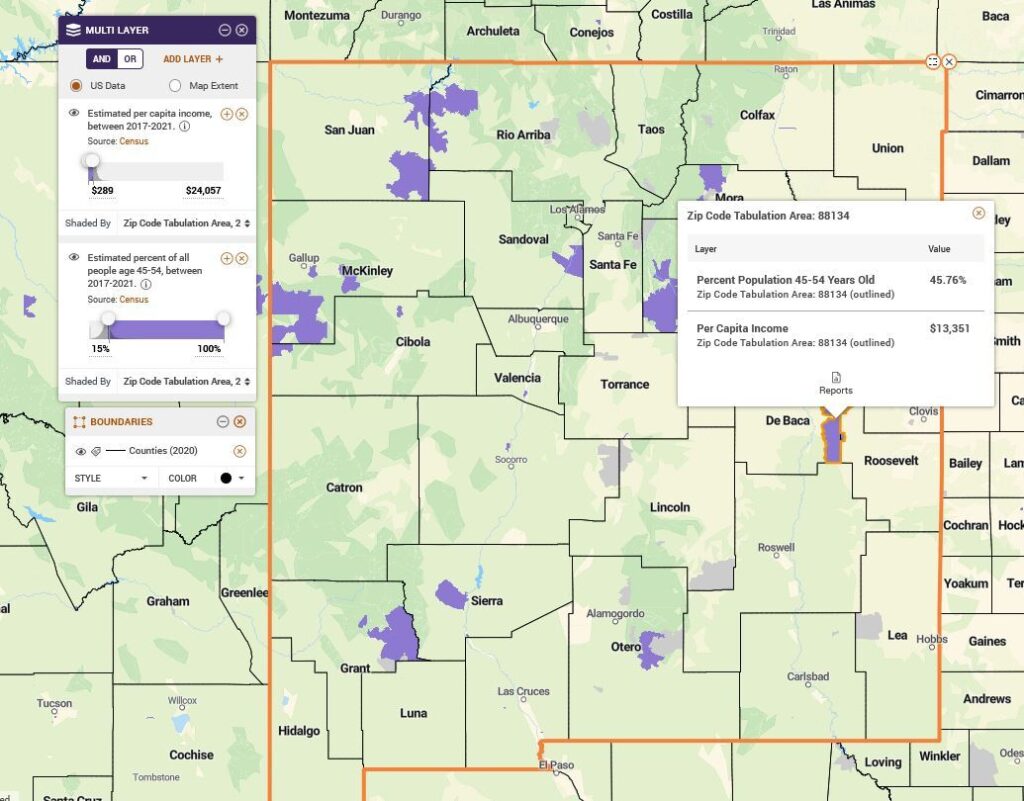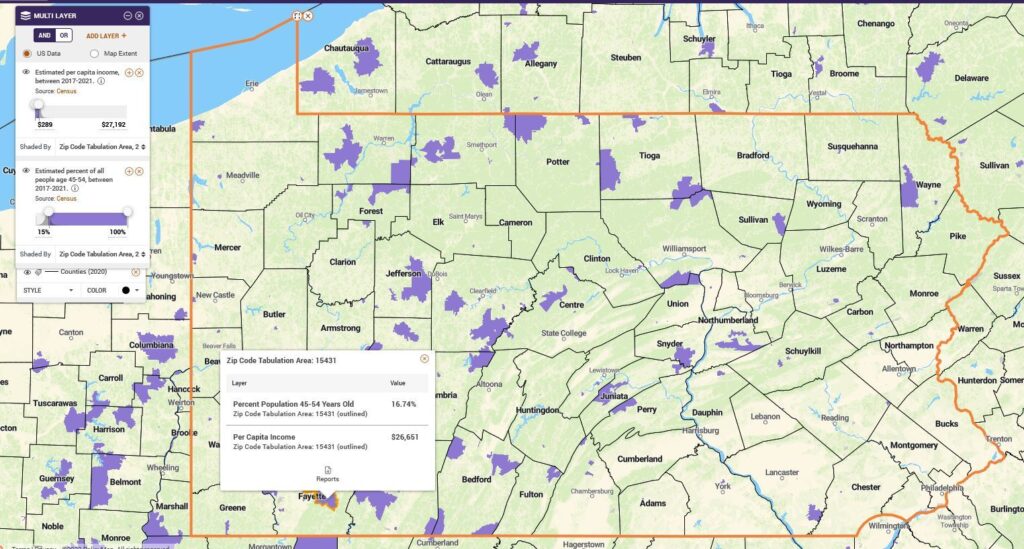Where do people impacted by new SNAP work requirements live?

The new, recently signed, debt ceiling legislation places new work requirements on SNAP recipients aged 49 to 54. Prior to the new legislation, recipients aged 18 to 49 needed to show proof of enrollment in a job training program or 80 hours of work per month in order to receive SNAP benefits. Now those requirements will carry over to individuals up to the age of 54. Some researchers estimate that the change in the age requirements for food assistance could impact approximately 750,000 adults.
Is it possible to identify where these people live at a local level, such as zip code, in order to help local entities plan for the impact? While available data is not perfect, it’s possible to identify likely areas where people may be most impacted.
What is SNAP?
The Supplemental Nutrition Assistance Program (SNAP) is a federal assistance program. Previously known as food stamps, SNAP provides eligible low-income individuals and families with funds to purchase food. While the program is administered by the federal government, operations are at the state level.
The primary goal of SNAP is to alleviate hunger and improve the nutrition of low-income individuals and families. Recipients use these funds to purchase eligible food items at authorized grocery stores and farmers’ markets. (Note: You can find all of these authorized stores and farmer’s markets on PolicyMap.)
Eligibility for SNAP is determined based on factors set by each state such as household income, size, assets, and expenses. The goal is to ensure assistance is targeted to those in need.
What did the new debt ceiling legislation do to SNAP?
In short, it enacted new work requirements on recipients between 50 and 54 years old, while also providing exceptions for those who are homeless, veterans, and young people who have aged out of foster care.
Can data help us figure out where most of the people who will be impacted by the new work requirement live?
Because states control the income eligibility guidelines for SNAP recipients, it is important to look within specific states to identify concentrations of populations. Two examples follow:
New Mexico
New Mexico has the highest rate of people participating in SNAP (24.3%) according to the US Department of Agriculture, and requires individuals to have an annual income of less than $24,057 in order to be eligible for participation. In PolicyMap, users can view zip codes in New Mexico where the per capita income is equal to or less than $24,057 AND at least 15% of the population is comprised of individuals aged 45 to 54. The map shows zip codes scattered throughout the state where higher concentrations of likely eligible individuals live. In zip code 88134 in DeBace County, 45.76% of the people who live there are between the ages of 45 and 54, AND annual per capita income as of the latest data from the American Community Survey was $13,351.

Pennsylvania
In Pennsylvania, where 14.6% of the population participates in SNAP, the state requires an individual’s income to be equal to or less than $2,266/month for eligibility. Annualized that is equal to $26,651. In PolicyMap, users can view zip codes that have per capita income at or below this level AND where at least 15% of the population is comprised of individuals aged 45 to 54. The map reveals a number of zip codes where concentrations are likely high. In zip code 1543 in Fayette County, for example, 16.74% of the population is between the age of 45 and 54, AND annual per capita income at $26, 651 is lower than the state threshold.

Data within PolicyMap can help states and localities strategize around the implementation of these new requirements. Reach out to learn more about this and other data we have available for your use.